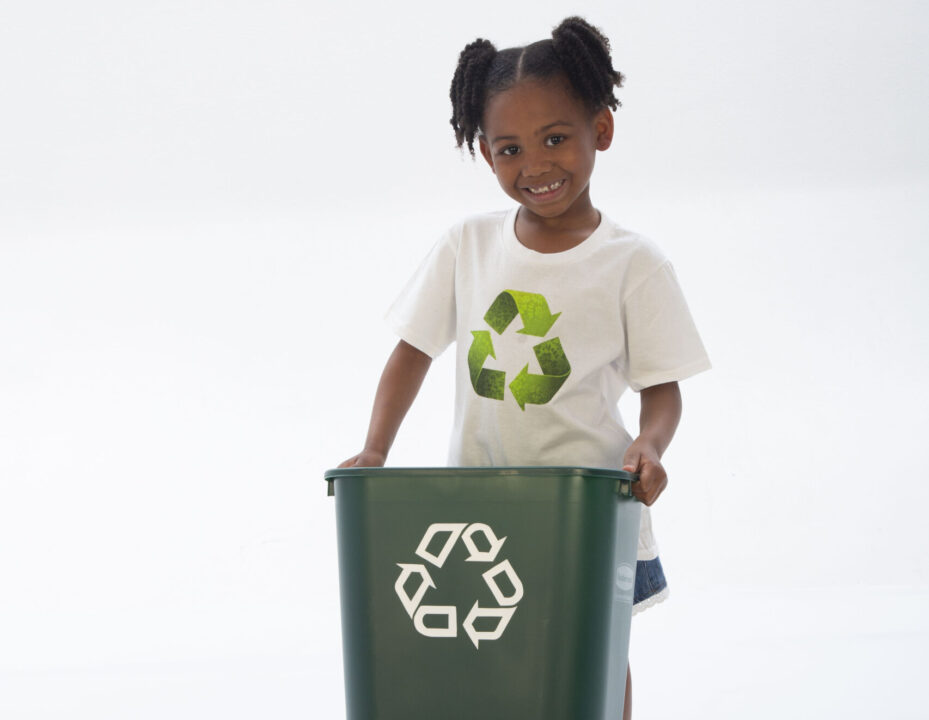With Earth Day right around the corner, it’s essential to discuss what’s going on in our environment. When daily life requires single-use plastic bags, styrofoam take-home containers, film popcorn buckets, and other items that are hurting the natural world, Earth Day is a time to reevaluate our habits.
Sometimes, the discussion around global warming, plastic in the ocean, and recyclables in the landfill can feel doomsday-worthy. As a society, we do have to adjust some of our practices in order to combat climate change. Rather than sitting awake at night worrying about climate change, take a realistic (and sustainable) step to help the natural world by minimizing your plastic use and properly recycling.
The Recycle Problem
We’ve all probably heard the rumors that a small percentage of items that are put in the blue bin are actually recycled. Unfortunately, this rumor is true.
According to the Organisation for Economic Co-operation and Development, only 9 percent of plastic waste is recycled. The report found that in the U.S., 73 percent went in the landfill, 19 percent was incinerated, 4 percent was mismanaged, and only 4 percent was actually recycled.
These poor statistics exist for several reasons, including it’s expensive to recycle, certain plastics cannot be recycled, and consumers are disposing of their recyclables improperly.
One of the three reasons plastic waste is not being recycled is in the consumer’s control—recycling goods properly. There are three basic rules when it comes to recycling that every consumer should follow.
1.Know the Recyclable Items
If you recycle in your home, you’re not helping the environment if you’re putting nonrecyclable items in the bin. It’s always important to check if an item can be recycled. When it comes to plastic items, each one has a triangle on the bottom with a number in the middle. This number tells you what kind of plastic it’s made out of. Numbers 1-7 can be put in the recycle bin. If you’re unsure whether an item is recyclable, take a minute out of your day and look it up.
Recyclable Items:
- Recyclable Items: Plastic Bottles & Containers
- Paper
- Glass Bottles & Containers
- Flattened Cardboard & Paperboard
- Food & Beverage Cans (Aluminum and Steel)
Nonrecylclable Items:
- Food & Liquids
- Foam Cups & Containers
- Green Waste
- Batteries
- Loose Plastic Bags, Bagged Recyclables, or Film
- Clothing, Furniture, Carpet
- Bubble Wrap
2. Empty, Clean & Dry
If you recycle in your home, this is an essential step: only put empty, clean, and dry items into a recycle bin.
“The truth is that plastic with food residues in or on it usually cannot be recycled. Only good quality, clean plastics can go through the recycling process,” states rePurpose Global. “Sometimes a recycling factory would perform the washing for you, but most times the plastic is deemed useless, lumped with the other trash, and thrown in a landfill or incinerator.”
Waste Management suggests placing recyclables in your sink while rinsing dishes so the items are clean from residue and you minimize the amount of water needed.
3. Don’t Bag the Recycling
If you put your recyclables in a trash bag, all your hard work will be for nothing. Ironically, single-use plastic bags can’t be recycled. Instead of tossing a bag full of recyclables into the bin, empty the contents directly. It’s a small change with a big impact.
Even if your heart is in the right place when it comes to recycling, you are not actually helping the environment if you do not follow these three easy rules.
In addition to properly recycling, reducing and reusing materials is a great way to minimize your carbon footprint. One way to reduce is by being mindful of the products you are constantly using. Instead of buying a paper bag at the store, bring your canvas bags (you can carry more groceries, too!). When you go out to eat, bring your own to-go container for the leftovers. Little changes like this won’t cure the world, but they can minimize your individual carbon footprint.
While individual actions are important, it’s essential to recognize that the burden of solving the recycling crisis should not rest solely on the consumer’s shoulders. No matter how diligently we sort our plastics, the overarching impact comes down to corporate practices.
Consumers can influence change through informed choices and demand for eco-conscious products. However, true systemic change requires corporations to adopt environmentally responsible practices.
In the spirit of Earth Day, let’s take a hard look at our consumer habits, ensure we are recycling properly, and continue to have conversations about improving the environment.


